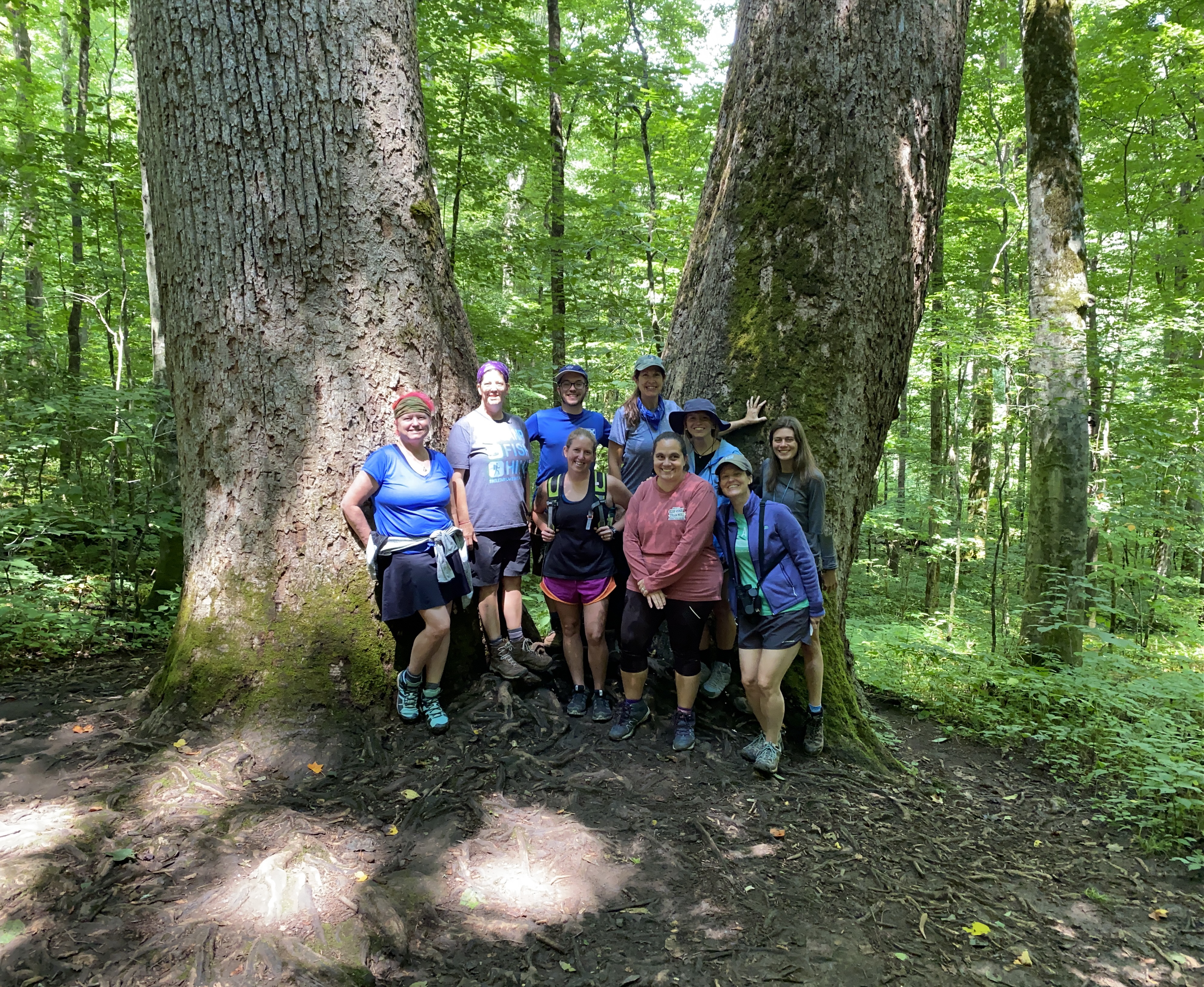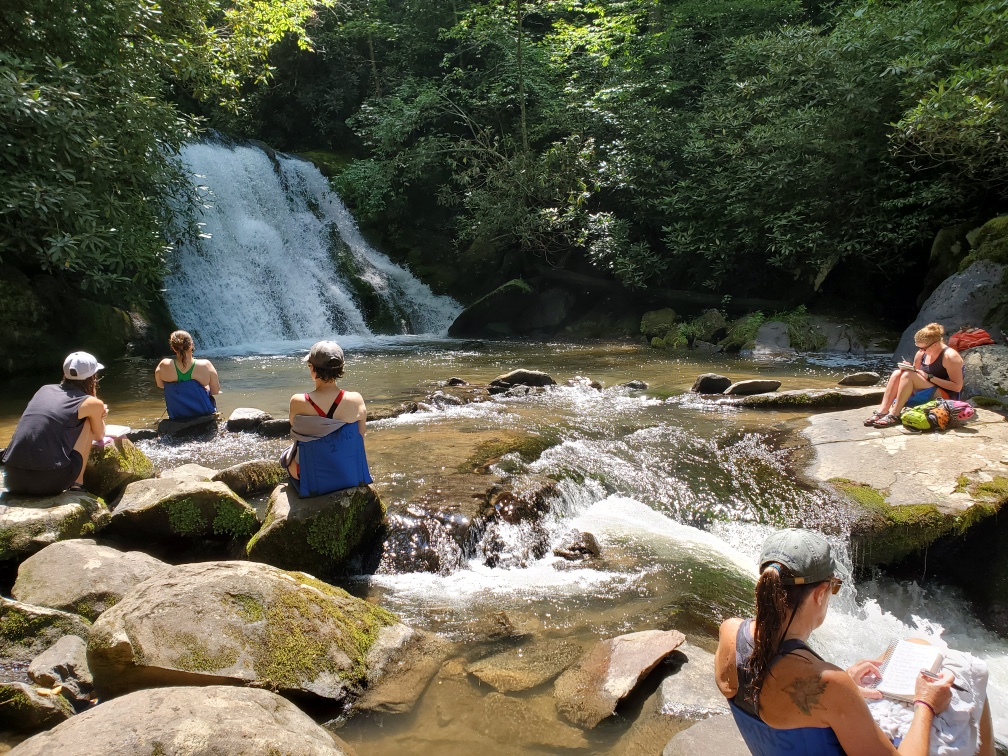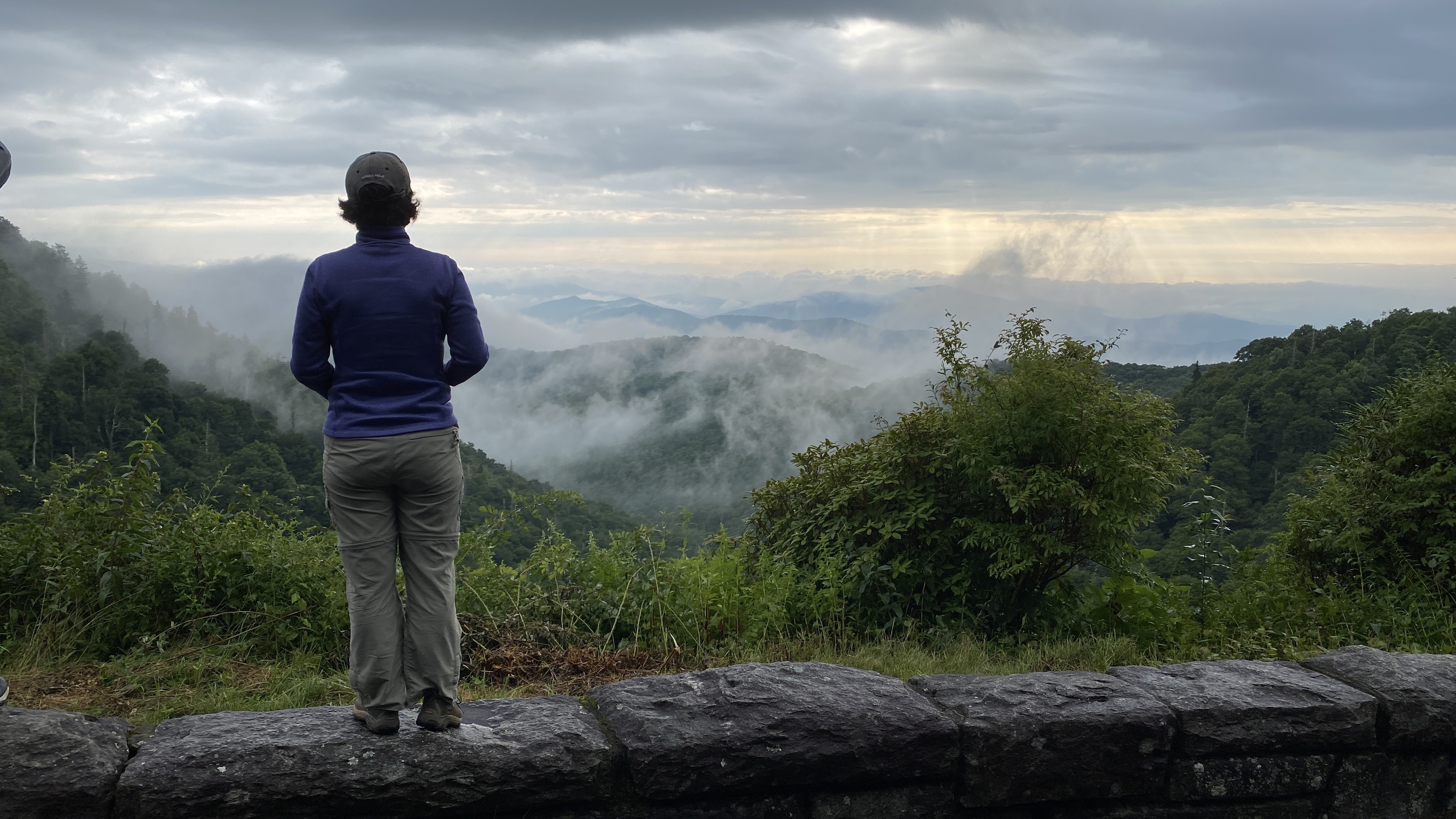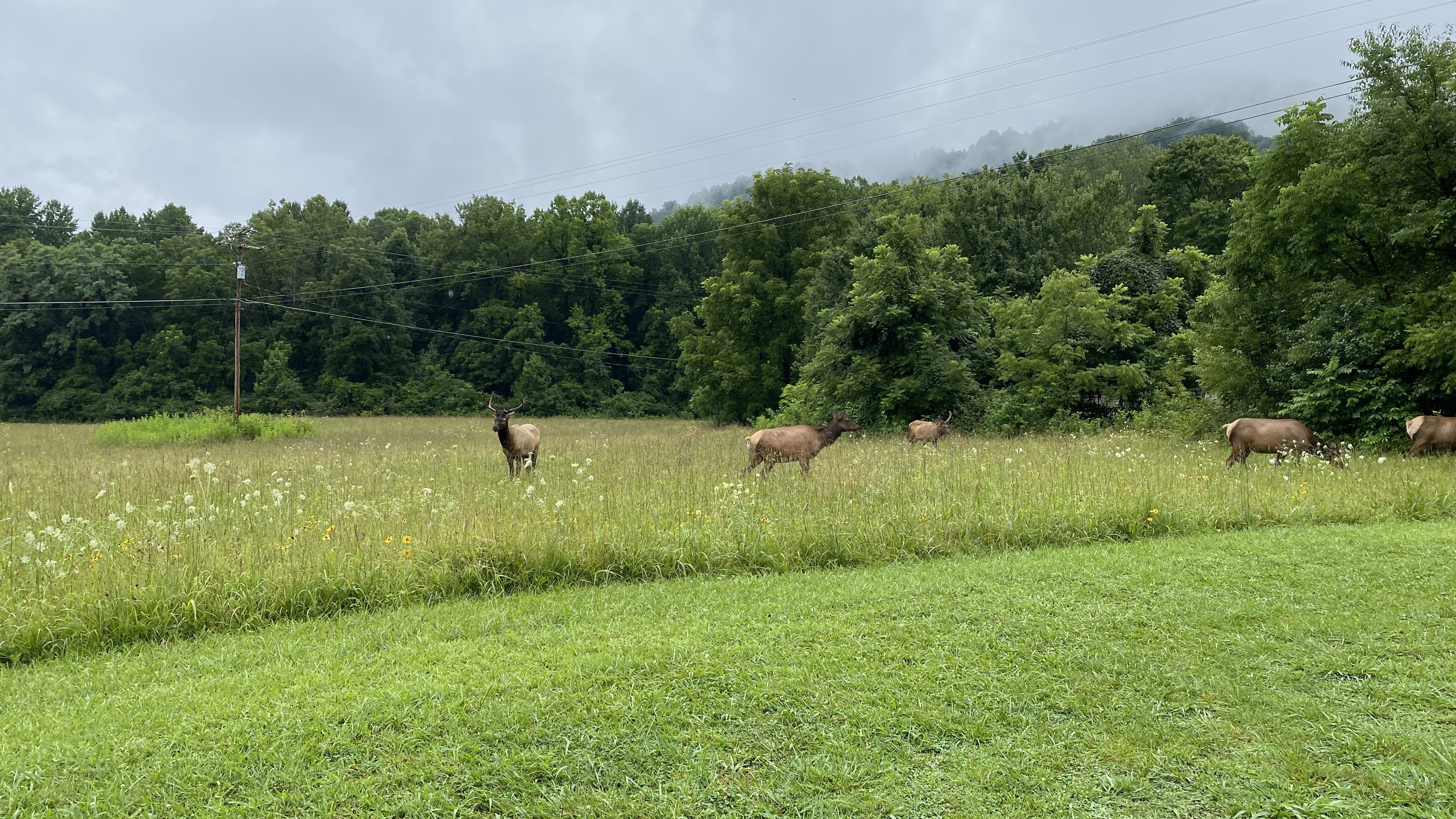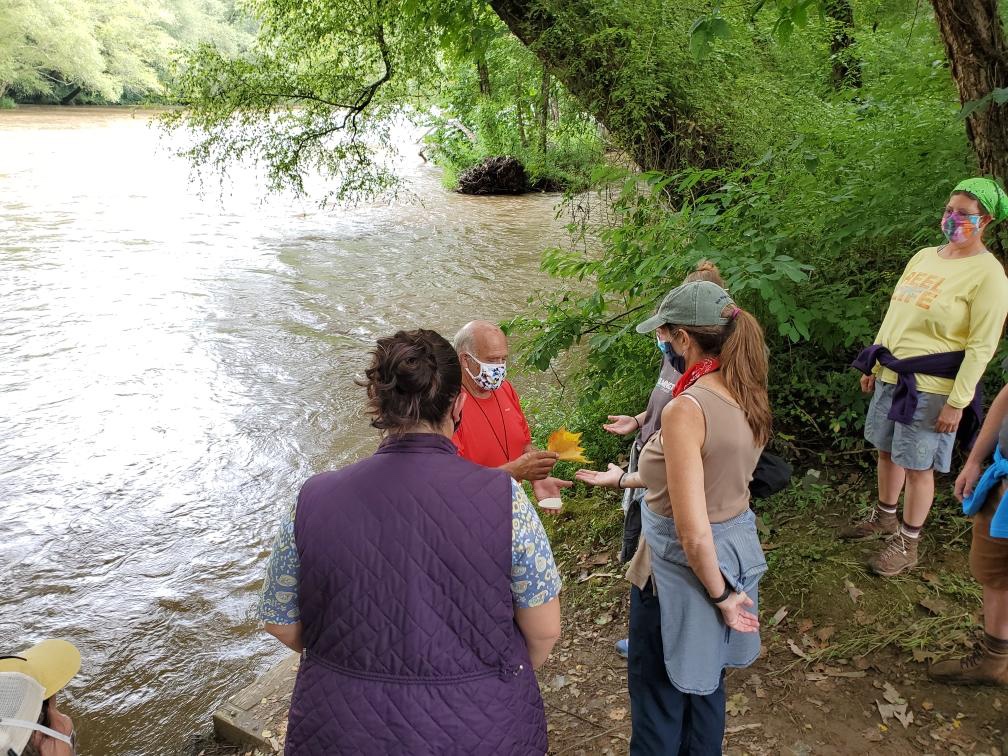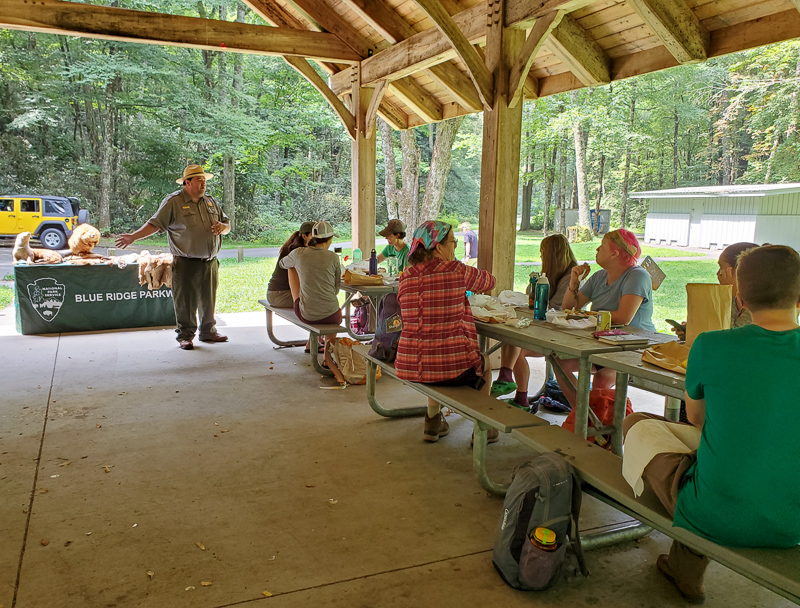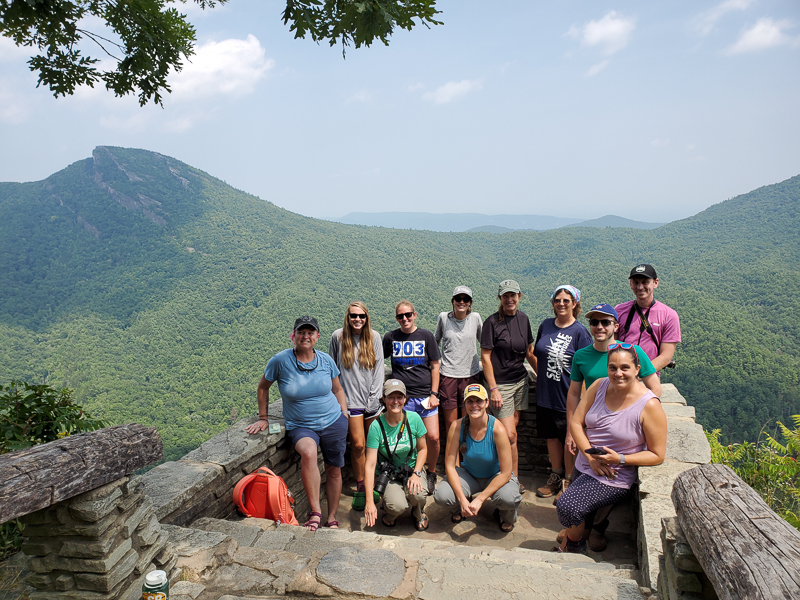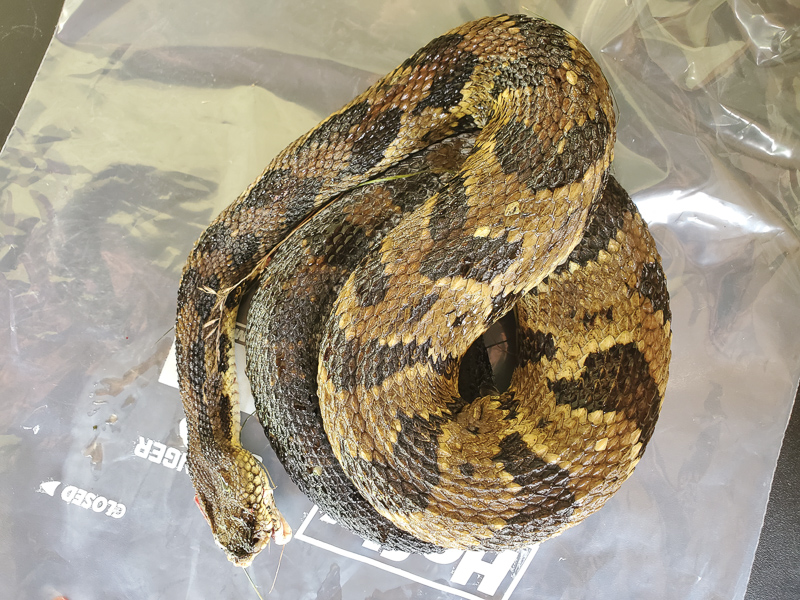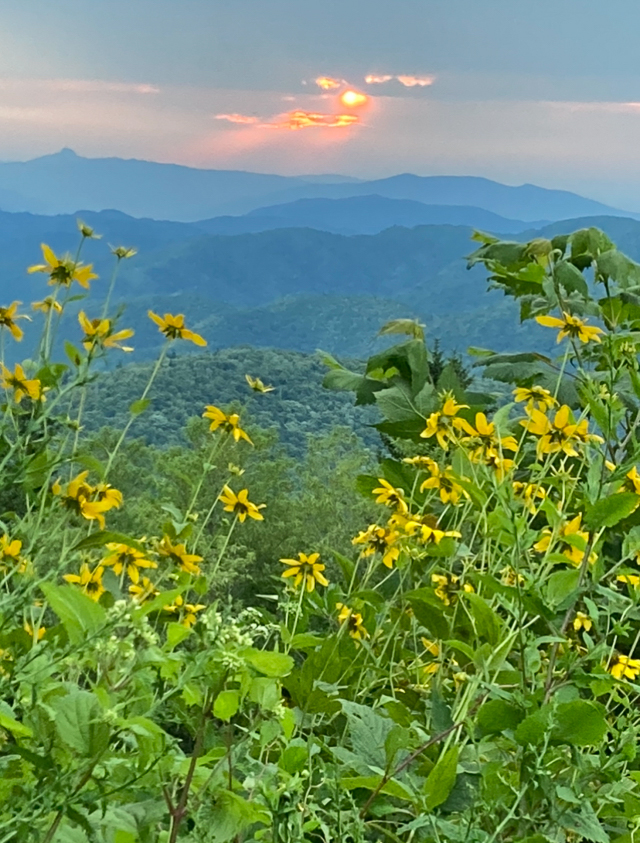
Sunrise over the Black Mountains (named for the abundance of dark-colored spruce and fir trees at higher elevations).
Beep, beep, beep! 4:45am comes early, but when we’re chasing a sunrise, nothing can stop us. We drove to Ridge Junction Overlook, through the fog and clouds, and watched the sunrise. Since we’re lifelong learners, we had to explore the surrounding wildflowers, too.

Museum ornithologist John Gerwin holds a banded Hermit Thrush while the group learns how to determine the age based on the feathers and body conditions of the bird.
Next, we joined John Gerwin, NCMNS ornithologist, to catch songbirds in mist nets. He taught us about banding, tracking migration patterns, and releasing birds. We have all improved our bird watching and listening skills.

John Gerwin releasing a bird.
The adventure continued as we traveled farther into the clouds. Our mission was to summit Mt. Mitchell, highest peak east of the Mississippi River. This alpine ecosystem greeted us with Frasier firs, wind, cold, and lots of rain. This didn’t stop us from exploring the surrounding forest and discovering some salamander, lichen, and spider species that were new to us
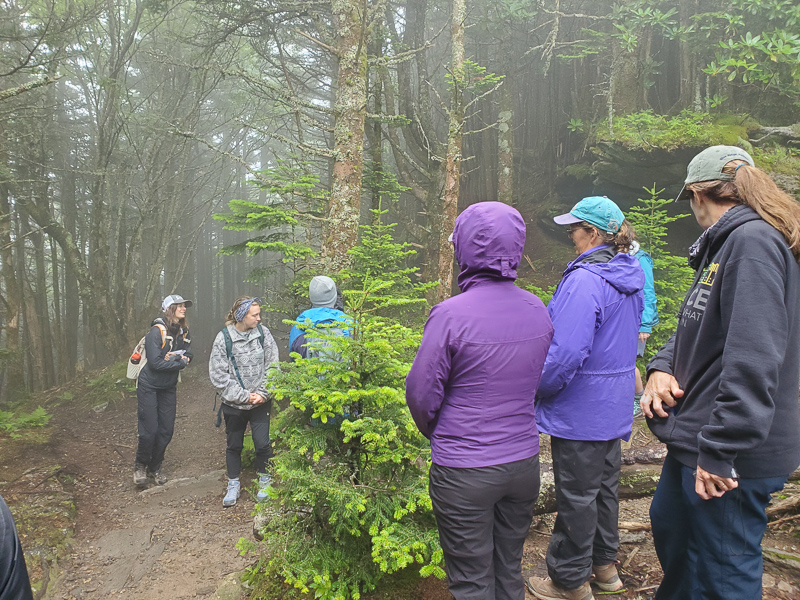
Eryn teaches us about her expert topic, the Fraser Fir Tree, and their importance to the unique, high elevation spruce-fir forests found at Mount Mitchell.
After we returned to the van and peeled off all of our wet layers, we spent the afternoon choosing our own adventure. We visited Setrock Creek Falls, searching for salamanders and crawfish. Fun fact: crawfish carry their young on their underside even after they’ve hatched. South Toe River provided us with very cold water for snorkeling and trout-watching. While drying his mist nets, John caught a chipping sparrow, providing us more opportunity to learn about this species. An evening campfire gave us additional time to reflect and enjoy each other’s company. As we approach the halfway point, we all agree that this has been an excellent experience, and we cannot wait to see what’s on the other side.

